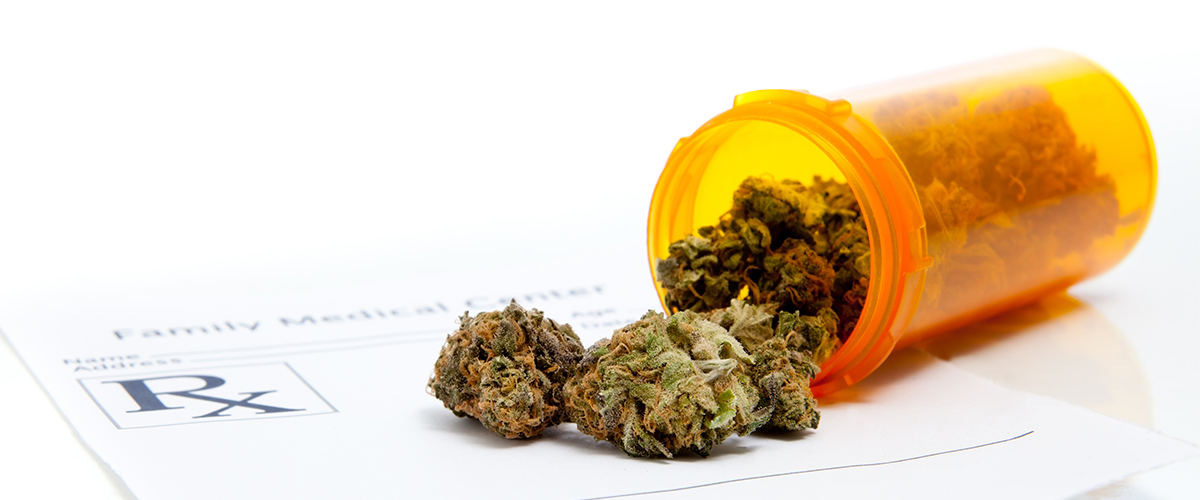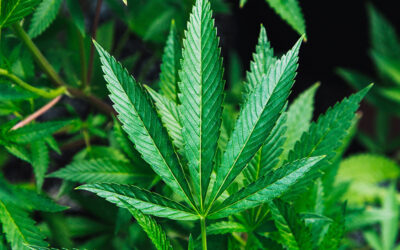Medical marijuana is now widely used as a substitute or supplement to traditional prescription drugs. Here you can learn about medical marijuana’s many uses.
The use of marijuana for medicinal purposes dates back centuries. From its earliest known use in Ancient China to today, our awareness of potential medical marijuana uses has grown.
In the United States, cannabis was widely utilized as a patented medicine during the 19th and early 20th centuries. It’s been only in the last few decades, however, that researchers and medical experts started to truly understand medical marijuana benefits.
With that growing acknowledgement of cannabis and its therapeutic effects, attitudes toward the substance have shifted dramatically. This has led a significant expansion in legal access throughout the United States and the globe.
Keep reading to learn more about the wide array of medical marijuana uses, and the science behind cannabis’ therapeutic potential.
What is Medical Marijuana?
Medical marijuana refers to using the cannabis plant or its extracts to treat symptoms of an illness or a disease.
Cannabis contains more than 400 chemical compounds that when absorbed interact with the body’s systems. Many of these compounds, particularly a type of active chemical compound called cannabinoids, have shown to have medicinal properties beneficial for treating or managing various ailments.
The U.S. Food and Drug Administration (FDA) has yet to recognize or approve marijuana as a food or medicine, but the agency has approved some cannabis-based medications for use in the U.S.
Many state lawmakers and voters recognize the various medical marijuana benefits. More than 60 percent of states and territories in the U.S. have legalized medical marijuana. Each state has their own regulations on medical marijuana uses, with many requiring that patients be first diagnosed with particular qualifying conditions.

Medical Marijuana Uses
People have used marijuana to address health conditions for at least 3,000 years, and throughout history many civilizations have documented their medical marijuana uses.
Cannabis also has a long history in America, and prior to prohibition was considered a viable treatment option in the U.S. Pharmacopeia. Over the past 25 years, the medical use of marijuana has started to return and today there are thought to be roughly 3.5 million medical marijuana users in the U.S.
In the world of medical marijuana uses, there is still a lot to discover about medical marijuana benefits. Researchers are regularly seeking to learn more about cannabis and its potential for improving symptoms, treating ailments, and enhancing the quality of life among those diagnosed with an illness or disease.
By far the most common question from those interested in cannabis and its therapeutic potential is: What is medical marijuana used for?
Today there are over 50 different conditions or symptoms that are legally treatable with medical marijuana. Medical cannabis has the potential to systematically replace multi-billion dollar medication industries around the world, according to a pair of recent studies.
Here we summarize various medical marijuana uses, exploring why people use medical marijuana and how it benefits them.
Pain Management
By far the most common reason people use medical marijuana is for pain management. Chronic and severe pain accounts for nearly two-thirds of all medical cannabis patients in the U.S.
The benefits of medical marijuana for pain have been widely studied, with research showing that cannabis is effective for reducing both neuropathic and nociceptive pain. Even refractory pain situations, where the discomfort is resistant to other traditional medications, have shown to be treatable with medical marijuana.3,7,11
A survey completed only a few years ago found that medical marijuana treatments elicited a 64 percent drop in average pain.12 Cannabis has even showed potential for replacing or substituting prescription opioids, with more than 9 of 10 pain patients preferring cannabis over opioid and non-opioid medications.
Nearly all of the states that allow medicinal cannabis acknowledge the benefits of medical marijuana for pain and include it as a qualifying condition.
Slow the Progression of Alzheimer’s and Parkinson’s Diseases
For the estimated 5.7 million Americans living with Alzheimer’s disease and the approximately 60,000 Americans diagnosed with Parkinson’s disease each year, medical marijuana can help manage symptoms and may even help slow the disease’s progression.
Among Alzheimer’s disease patients, medical marijuana has shown to cause a significant reduction in behavioral and psychological symptoms, including agitation, aggression, irritability, apathy, delusions, and sleep problems.
Medical marijuana can also effectively reduce the motor-related symptoms of Parkinson’s disease, including tremors. By binding with dopamine receptors, cannabis-derived cannabinoids reduce the effects of disease-related drops in dopamine that result in loss of motor control.
Cannabinoid effects on the body also appear to trigger neuroprotective and anti-inflammatory responses, which can slow the progression of both neurodegenerative disorders.
Reduce the Debilitating Seizures Caused by Epilepsy
Epilepsy affects an estimated 3.4 million people nationwide, and medical marijuana can be used to reduce the number and severity of seizures in both adults and children.
The influence of cannabis-derived cannabinoids on one of the body’s major self-regulatory networks appears to modulate seizure activity by reducing overall neuronal excitability and inhibiting the release of a particular neurotransmitter.2 Recently, researchers found that cannabis reduced seizures in 90 percent of adults and 71 percent of children.
Kill or Limit the Growth of Cancer Cells
For the estimated 1.7 million people in the U.S. who will be diagnosed with cancer this year, medical marijuana benefits by helping manage the symptoms associated with chemotherapy and may even combat cancer cells themselves.
Medical marijuana is commonly recommended by doctors to cancer patients to help curtail the nausea, pain, and weight loss that often come about following cancer treatments. Studies also indicate that cannabinoid effects stimulate a series of chemical reactions that can, in some cases, suppress tumor growth.10
Reduce Spasms Associated with Multiple Sclerosis (MS)
For the estimated 400,000 people in the U.S. with MS, medical marijuana can help reduce the pain, muscle stiffness, and spams often caused by the disease.1,5
Research also suggests that medical marijuana may be able to slow the progression of MS by helping modulate the inflammatory reaction and assisting in neuroregeneration.4,8
Lessen the Emotional Impact and Reduce Anxiety Caused by Post-Traumatic Stress Disorder (PTSD)
Approximately 24.4 million people in the U.S. have PTSD at any given time. Medical marijuana can help PTSD patients manage anxiety, fear, and sleep problems after experiencing a traumatic event.
By modulating the release of a neurotransmitter, cannabis-derived cannabinoids can help block fear memory formation and help regulate the stress response.9
Other Medical Marijuana Uses
Outside of these conditions, there are many other medical marijuana uses. Doctors commonly recommend medical marijuana to:
- Manage anxiety
- Control symptoms related to attention deficit hyperactivity disorder (ADHD)
- Decrease intraocular pressure in the eye to help treat glaucoma
- Reduce the frequency and severity of nausea
- Manage symptoms and slow the progression of Amyotrophic Lateral Sclerosis (ALS)
- Promote behavior and communication in patients with autism
- Lower pain and improve sleep in those with fibromyalgia
- Reduce the side effects caused by HIV/AIDS treatments
- Reduce migraine-related pain
- Facilitate recovery following a traumatic brain injury (TBI)
The National Academies of Sciences, Engineering, and Medicine in 2017 published a study investigating medical marijuana uses. The rigorous and weighty 395-page report summarized research-backed medical marijuana benefits and recommended that more studied needed to be done to more thoroughly understand cannabinoid effects.
Even more medical marijuana uses are available to explore on our education page.

Cannabinoids Effects
So exactly how does medical marijuana work? Exploring medical marijuana uses is incomplete without an explanation of cannabis-derived cannabinoids and their effects.
The medical benefits of weed are directly related to the 100-plus cannabinoids found in cannabis, some of which have been found to have therapeutically beneficial properties. Once absorbed, these active chemical compounds alter the release of neurotransmitters in the brain by acting on cannabinoid receptors, eliciting various effects.
Cannabinoid receptors are located on cells throughout the body. They are a crucial component of the endocannabinoid system, or ECS, one of the body’s largest self-regulatory networks. The ECS is responsible for keeping a wide array of functions in balance.
While scientists only discovered cannabinoids decades ago, thousands of studies have been already completed on cannabinoids effects, and new studies on medical marijuana benefits are regularly being published.
The body produces its own cannabinoid chemicals, called endocannabinoids. Through their interaction with cannabinoid receptors, these chemicals play a role in regulating memory, concentration, mood, appetite, sleep habits, immune system response, pain sensation, and more.
Many mental and physical health issues are thought to result from the dysregulation of the body’s EC system, which could be due to a lack of cannabinoids or cannabinoid receptors.
Cannabis-derived cannabinoids can serve to support the body’s own endocannabinoids, stimulating the endocannabinoid system so that it more effectively keeps functions balanced and running optimally. In other words, cannabinoids effects may help the body’s own natural chemicals work better.
As the research findings above suggest, these health benefits of cannabinoids can help treat symptoms of illness and other conditions. Many of the medicinal benefits of marijuana have to do with it encouraging a well operating ECS.
Using Medical Marijuana
When it comes to medical marijuana uses, patients have several methods to choose from.
Medical marijuana may be:
- Vaped or dabbed: Heating up marijuana to its respective boiling point with a vaporizer to release cannabinoids and other active ingredients as an inhalable vapor.
- Smoked: Setting fire to marijuana in the form of a hand-rolled joint, pipe, gravity bong or water pipe to release cannabinoids as an inhalable smoke.
- Eaten: Swallowing marijuana in the form of an edible, such as a cookie, gummy, or beverage.
- Taken under the tongue: Placing liquid-form marijuana under the tongue for 60-90 seconds and allowing it to absorb through the mucous membranes of the mouth.
- Applied topically: Applying cannabis-infused body products like balms, salves, lotions, and oils, directly onto the skin for targeted effects.

Is Marijuana Legal?
Medical marijuana is only legally available to patients in U.S. states and territories that have established medical marijuana programs.
Thankfully, today a majority of Americans live in a state where marijuana can be used as medicine. While marijuana in all forms remains continues to be illegal at the federal level, 32 states and Washington, D.C. and Puerto Rico have passed their own laws permitting its use.
After asking, “Is marijuana legal where I live?” and discovering you live in a medical marijuana state, the next step is to look into your state’s particular regulations.
Medical marijuana laws vary widely state by state, sometimes even from city to city. The variations include the forms of marijuana legally available, the percentage of tetrahydrocannabinol (THC) allowed, and conditions that qualify patients for a state-issued medical marijuana card.
Some states allow for registered medical marijuana patients to buy cannabis from licensed dispensaries and cultivate their own cannabis plants at home. Others allow patients to purchase cannabis through dispensaries, but not partake in home cultivation. A few only allow home cultivation.
More Americans than ever now believe there are viable reasons why medical marijuana should be legal under federal law. With a growing body of research revealing the benefits of medical marijuana uses of the cannabis plant to treat conditions, diseases, and symptoms, 94 percent of Americans are now in favor of legal medical marijuana.
To find out what’s allowed in your state, check out our Overview of U.S. Medical Marijuana Law or visit our education page and scroll to find your state. We also provide tips on how to discuss medical marijuana with your doctor and getting a medical marijuana card.
More on Medical Marijuana
There is always more to learn about potential medical marijuana uses and the benefits of cannabinoids effects through our education page. There, you’ll find an overview of cannabis research findings and more about the medical uses of weed. Medical Marijuana, Inc. is also your source for the latest in cannabis news.
References:
- Baker, D., Pryce, G., Croxford, J.L., Brown, P., Pertwee, R.G., Huffman, J.W., and Layward, L. (2000, March 2). Cannabinoids control spasticity and tremor in a multiple sclerosis model. Nature, 404(6773), 84-7. Retrieved from http://www.nature.com/nature/journal/v404/n6773/full/404084a0.html.
- Blair, R.E., Deshpande, L.S., Sombati, S., Falenski, K.W., Martin, B.R., and DeLorenzo, R.J. (2006, June). Activation of the cannabinoid type-1 receptor mediates the anticonvulsant properties of cannabinoids in the hippocampal neuronal culture models of acquired epilepsy and status epilepticus. The Journal of Pharmacology and Experimental Therapeutics, 317(3), 1072-1078. Retrieved from http://jpet.aspetjournals.org/content/317/3/1072.long.
- Boychuck, D.G., Goddard, G., Mauro, G., and Orellana, M.F. (2015 Winter). The effectiveness of cannabinoids in the management of chronic nonmalignant neuropathic pain: a systematic review. Journal of Oral & Facial Pain and Headache, 29(1), 7-14.
- Croxford, J.L., Pryce, G., Jackson, S.J., Ledent, C., Giovannoni, G., Pertwee, R.G., Yamamura, T., and Baker, D. (2008, January). Cannabinoid-mediated neuroprotection, not immunosuppression, may be more relevant to multiple sclerosis. Journal of Neuroimmunology, 193(1-2), 120-9. Retrieved from http://www.jni-journal.com/article/S0165-5728(07)00396-7/fulltext.
- Fox, P., Bain, P.G., Glickman, S., Carroll, C., and Zajicek, J. (2004, April). The effect of cannabis on tremor in patients with multiple sclerosis. Neurology, 62(7), 1105-9. Retrieved from http://www.neurology.org/content/62/7/1105.long.
- Kubajewska, I., and Constantinescu, C.S. (2010, August). Cannabinoids and experimental models of multiple sclerosis. Immunobiology, 215(8), 647-57. Retrieved from http://www.sciencedirect.com/science/article/pii/S0171298509001442.
- Lynch, M.E., and Campbell, F. (2011, November). Cannabinoids for treatment of chronic non-cancer pain; a systematic review of randomized trials. British Journal of Clinical Pharmacology, 72(5), 735-744.
- Pavisian, B., MacIntosh, B.J., Szilagyi, G., Staines, R.W., O’Connor, P., Feinstein, A. (2014, May 27). Effects of cannabis on cognition in patients with MS: a psychometric and MRI study. Neurology, 82(21), 1879-87. Retrieved from https://www.ncbi.nlm.nih.gov/pmc/articles/PMC4105254/.
- Potter, C.M., Vujanovic, A.A., Marshall-Verenz, E.C., Bernstein, A., and Bonn-Miller, M.O. (2011, April). Posttraumatic stress and marijuana use coping motives: the mediating role of distress tolerance. Journal of Anxiety Disorders, 25(3), 437-43. Retrieved from https://www.ncbi.nlm.nih.gov/pmc/articles/PMC3101637/.
- Preet, A., Ganju, R.K.., and Groopman, J.E. (2008, January). Δ9-Tetrahydrocannabinol inhibits epithelial growth factor-induced lung cancer cell migration in vitro as well as its growth and metastasis in vivo. Oncogene, 27(3), 339-46. Retrieved from https://www.nature.com/articles/1210641
- Wallace, M.S., Marcotte, T.D., Umlauf, A., Gouaux, B., and Atkinson, J.H. (2015, July). Efficacy of Inhaled Cannabis on Painful Diabetic Neuropathy. Journal of Pain, 16(7), 616-27.
- Webb, C. W., & Webb, S. M. (2014). Therapeutic Benefits of Cannabis: A Patient Survey. Hawai’i Journal of Medicine & Public Health, 73(4), 109–111. Retrieved from https://www.ncbi.nlm.nih.gov/pmc/articles/PMC3998228/.






